#software vendors list
Explore tagged Tumblr posts
Text
Boost Business Efficiency with Catalyst PhiEdge's Powerful Performance Management System
The Performance Management System by Catalyst PhiEdge is designed to help businesses achieve optimal performance through data-driven insights and streamlined processes. This comprehensive solution allows organizations to set clear goals, monitor progress, and enhance employee productivity. With its user-friendly interface, the system promotes continuous feedback, ensuring alignment with business objectives and boosting overall efficiency. Whether you're looking to improve individual performance or foster team collaboration, this tool provides the flexibility and scalability to meet your unique business needs.
#Performance management software#Performance management systems#Best Performance management system software#Performance management software vendors in India#Performance management software vendors list#Performance management software vendors pdf#Performance management software examples#Employee performance management software
0 notes
Text
Integrating E-Commerce Solutions across Websites and Apps for Multi-Platform Selling
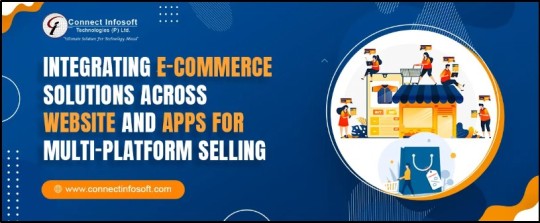
In digital age, e-commerce has become an integral part of the retail industry. With the rapid growth of online shopping, businesses are constantly seeking ways to expand their reach and maximize their sales potential. One effective strategy that has emerged is multi-platform selling, which involves integrating e-commerce solutions across websites and apps to create a seamless shopping experience for customers.
Without a doubt, selling across various platforms is a game changer in the realm of custom eCommerce development, with the potential to propel any organization to new heights. This blog will look at all aspects of multi-platform selling and how it affects the modern eCommerce business scene. Let us get started.
eCommerce Evolution: A New Era of Online Selling
Welcome to the new era of online selling! With the ever-growing popularity of e-commerce, businesses are constantly seeking ways to expand their reach and increase their sales. One such method that has gained significant traction is multi-platform selling, which involves integrating e-commerce solutions across websites and apps.
However, because consumer behaviours and market demands change so quickly, an all-in-one or single eCommerce strategy is insufficient for long-term success. This is where multi-platform selling provides numerous chances for firms looking to increase engagement and diversify their reach.
What Does Multi-Platform Selling Mean?
Multi-platform selling refers to the practice of selling products or services through multiple online channels simultaneously. This approach allows businesses to reach a wider audience and cater to customers' preferences across various platforms, including websites, mobile apps, social media platforms, and marketplaces. By offering a consistent shopping experience across different channels, businesses can enhance customer engagement, increase brand visibility, and boost sales.
Whether you run a little business or a large corporation, if you carefully position your company on these platforms, you will meet all of your customers' expectations by providing a convenient purchasing experience. However, managing sales across several channels is not as simple as it appears; a custom eCommerce development solution is required to optimize the process.
Major Perks of Multi-Platform Selling
There are several significant perks associated with multi-platform selling. Let's take a closer look at some of the major advantages that businesses can enjoy:
1. Expanded Reach: By leveraging multiple platforms, businesses can tap into a larger customer base and target diverse demographics. This broadens their reach and increases the chances of attracting new customers.
2. Enhanced Customer Experience: Multi-platform selling enables businesses to provide a seamless and consistent shopping experience across various channels. Customers can browse products, make purchases, and access support services conveniently, regardless of the platform they prefer.
3. Increased Sales Opportunities: With multiple channels at their disposal, businesses have more opportunities to showcase their products and services and convert leads into sales. Each platform serves as an additional sales channel, increasing the chances of generating revenue.
4. Improved Brand Visibility: Businesses may increase brand awareness and familiarity by maintaining a presence across many media. Consistent branding across channels promotes client trust and loyalty.
5. Better Data Insights: Multi-platform selling allows businesses to gather data from different sources, providing valuable insights into customer behaviour, preferences, and trends. This data can be used to optimize marketing strategies, personalize customer experiences, and drive informed business decisions.
Other key benefits of multi-platform selling include:
Improved conversion rate
Better customer loyalty.
Improved inventory transparency.
Improved customer segmentation.
Mobile commerce trend capitalization
Best Platforms for Multi-Channel eCommerce Business
1. Shopify: Shopify offers a comprehensive e-commerce platform that allows businesses to create and manage online stores. It provides seamless integration with various sales channels, including websites, mobile apps, social media platforms, and marketplaces.
2. Magento: Magento is a highly flexible and scalable e-commerce platform that caters to businesses of all sizes. It supports multi-channel selling by integrating with multiple platforms, enabling businesses to sell across websites, mobile apps, and marketplaces.
3. Etsy: If you want to sell antique, handcrafted, craft supplies, or other one-of-a-kind things online, Etsy is a great place to start. Users may easily access a wide range of product categories on this marketplace, including clothing, jewellery, tools, home, living, kids & babies, and entertainment.
4. Amazon Marketplace: As one of the largest online marketplaces, Amazon provides businesses with a vast customer base and global reach. Selling on Amazon Marketplace can significantly expand the visibility and sales potential of products.
5. eBay: eBay is another popular online marketplace that allows businesses to sell products to a wide range of customers. With its auction-style listings and fixed-price options, eBay offers flexibility for multi-channel selling.
6.Walmart Marketplace: Walmart is a frequently used marketplace that provides excellent prospects for online enterprises. This is a curated e-commerce portal. As a seller, you must meet specified requirements for providing excellent customer service.
7. Facebook Marketplace: This is Facebook's integrated platform that provides fantastic online selling choices to local sellers and small enterprises. This platform is simple to use and helps you promote your goods to a social media-savvy customer audience.
How to Set Up a Successful Multi-Platform Selling Strategy:
1. Identify Target Platforms:
Research and analyse the platforms that align with your target audience and business objectives. Consider factors such as platform popularity, user demographics, and integration capabilities.
2. Seamless Integration:
Select e-commerce platforms that offer robust integration capabilities with various channels. Ensure that your chosen platforms can synchronize product listings, inventory, pricing, and order management across all channels.
3. Consistent Branding:
Maintain consistent branding elements, such as logo, colors, and messaging, across all platforms. This creates a cohesive brand identity and fosters customer recognition and trust.
4. Optimize User Experience:
Provide a user-friendly and intuitive shopping experience on every platform. Optimize website and app performance, ensure mobile responsiveness, and streamline the checkout process to minimize friction and maximize conversions.
5. Data-Driven Decision Making:
Leverage analytics and data insights to monitor and measure the performance of each platform. Identify trends, customer preferences, and areas for improvement, and use this information to refine your multi-platform selling strategy.
6. Customer Support:
Offer consistent and responsive customer support across all platforms. Provide multiple channels for customer inquiries, such as live chat, email, and phone, to ensure a seamless support experience.
7. Cross-promotion:
Cross-promotion is a marketing strategy where two or more parties promote each other's products or services to their respective audiences. It's a mutually beneficial arrangement that can help increase brand exposure, reach new customers, and drive sales.
8. Privacy and Data Security:
- Manage all of your customers' data safely.
- Display all privacy policies to your customers to develop trust.
9. Focus on market trends.
- Keep up with the latest industry developments, platform updates, and client requests.
- Be prepared to change your business approach (if necessary) to stay ahead of the market.
Conclusion:
Multi-platform selling has become a crucial strategy for businesses aiming to thrive in the competitive e-commerce landscape. By integrating e-commerce solutions across websites and apps, businesses can expand their reach, enhance the customer experience, and boost sales. With the availability of various platforms, businesses can choose the ones that align with their target audience and business goals. By implementing a well-planned multi-platform selling strategy, businesses can establish a strong presence across multiple channels, drive customer engagement, increase brand visibility, and ultimately achieve success in the evolving world of e-commerce.
#Multi-Vendor E-Commerce Market Place Software#Best Multi-Channel Listing Software Solutions For Ecommerce Sellers#ECommerce Management Solution#ECommerce Product Management#Best ECommerce Software#Multi-Channel Selling Software#Shipping Software#Multi-Channel eCommerce Inventory Management Software#Product Listing Software#Multichannel Marketplace Software#Connect Infosoft#E-commerce website development#E-commerce website optimization#Mobile commerce optimization#Mobile commerce solutions#Multi-channel sales management
0 notes
Text

🕵️♂️ Diving deep into the testing trenches! 🚀 Unmasking the Bug Brigade's Top 4 Most Common Intruders:
1️⃣ UI Issues – Where pixels tell tales of visual challenges. 2️⃣ Functionality Issues – Unraveling the labyrinth of feature hiccups. 3️⃣ Security Issues – Guarding the digital fortress against potential breaches. 4️⃣ Performance Issues – Navigating the speed bumps in the quest for seamless operation.
Join us on this bug-busting adventure as we shine a spotlight on the quirks and quarks of software testing! 🐛🔍
#software testing vendor#software testing company#software testing outsource#Top Testing Company to hire#testing company#Automation Testing Company#Top 5 software testing company#How to select software testing vendor/services#software testing vendor list#Top 10 software testing company#Top 15 software testing company
0 notes
Text
tirade on pirating software. 1.7k words.
i recently read a post by someone who is anti-piracy (better: against making copies of software). they said that if you can't afford something you should wait for a sale or find a free alternative. and then they said that the only time that they find piracy (better: finding a copy online) acceptable is for games that are so old that you cannot buy them from a licensed vendor, but only from resellers, because in that case the developer doesn't get the money anyway.
i feel like i could make a sort of loophole argument in this framework, which is that i can watch ebay until the game is listed by a reseller, and then pirate it, because i'm no longer making a choice between paying the developer or not paying, but paying a reseller and not paying, and i've decided not paying a reseller is morally permissable.
but i think it can go a little further. they specified developer. i should pay the developer. even though i don't buy directly from the developer, but a licensed vendor. but the vendor's surcharge is not worth bringing up.
this is because we don't believe in following the law, exactly, and thus you should follow all copyright laws for that reason. it's because of, usually, one of two reasons: developers deserve to be compensated, or that we have a moral obligation to support the developer.
on the first view, the "just deserts argument", it's not clear to me that the moral obligation to not pirate is watertight in this case (when i said "pirate" before, i made a silly gesture, meant to indicate that i'll say that for brevity, but am not acquiescing). a developer deserves to be compensated for their work; but what do they deserve exactly?
does every developer deserve to become as rich from their game as Notch, and every time they don't there's been an injustice? you probably don't think that.
do they deserve some particular amount that we would say is 'fair'?—it isn't unjust if they do better (although you might think so, and complain about how much of the spotlight they take up compared to others just as deserving), but we only require that much success of them. this might be dependent on the kind of game that it is, for example, a better game deserves more success. if that's the case, then we've exonerated at least some pirates; so long as the developer is as successful on the market as they deserve to be, we've done nothing wrong.
you might say that it's wrong to pirate games that haven't yet reached the threshold of just success, because you place them in jeoprady of never achieving the success they deserve. further, you might say that this threshold is epistemologically unknowable to human beings (see: click), and therefore in practice you can never justify piracy, because you never know if a game has reached the threshold of justice. pirates, therefore, gamble with justice, and only Minos will pay their winnings.
i think this would be a good argument, except that i don't understand why i, as someone who wants to download a copy of the game, am the one who bears the moral responsibility. if the success of this developer is a matter of justice, then surely we all bear that responsibility, even people who don't play videogames. therefore we should all purchase and promote every game, and so forth.
this isn't what any anti-piracy advocate believes, even if they seem to take a deserts line. instead they restrict our obligations to participating in ordinary market mechanisms. the game is being sold as a commodity; therefore people should buy that commodity from a point of sale apporved by the producer, and so forth. it's taken for granted that the anarchy of the market is the right way to guarantee justice, and other possibilities are never explored. ultimately, the deserts argument naturalizes capitalist relations. once you remove these blinders, the mechanism for delivering justice it actually proposes seems obviously unreliable and unsatisfactory (in fact, i believe this criticism applies to all deserts arguments).
here i will quickly add my complaint against the second argument, that we should support the developer. the argument runs: if you like a developer, you should support their work by purchasing their products. i am a lot more sympathetic to this argument and so i won't spend much of the post attacking it. it's enough to say that it suffers from the same problem we just mentioned: why is participating in ordinary market mechanisms the best way to support the developer? capitalism is likewise naturalized by this case when it is advanced as a moral argument against piracy. therefore we can run the same argument: if we have a moral obligation to support game developers, then it's not clear to me why only potential players have that obligation, and so forth (but this time the criticism doesn't apply to all similar arguments, just this one).
however, it often isn't advanced that way, and as a pragmatic argument i tend to agree with it. in fact sometimes they actually have a case for participating in normal market mechanisms: DMC fans want you to buy DMC games because then Capcom will look at their sales figures and decide it's worth making another game. you could argue that they still have capitalist blinkers on because they only advocate you buy one copy, the one you'll play, which is how the game is sold. maybe they should be asking you to buy a hundred copies or whatever. but we don't want them to do that, LOL. and the feeling is usually that there are limits of what you can ask out of someone; when one DMC youtuber was spending quadruple digits on a DMC-themed gacha, his viewers expressed concern and encouraged him to stop. so cheers to DMC players.
in fact, there might be ethical reasons to only ask someone to purchase a copy of something in the normal way: when i try to get you to buy one of Xraftstar / Charity / Porpentine's games, i am doing it because i personally want my friend to succeed, and i want to see their art recognized. this is a kind of moral motivation, but it's the morality of rendering personal obligations; you are not likewise obligated. however, i of course feel there are limits on what i can ask of you, and so, unlike when i make donation posts for my friends who are struggling, i'm only comfortable encouraging you to purchase a copy of something i think will actually render a use-value to you (even if you could still obtain it in other ways and get the same use-value).
but anyway, why specify the developer in the first place? the work put in by the publisher, the developers and maintainers of the platform its sold on, the bandwidth of the payment processor, and so forth, all get left out of the question, even though they are all more or less necessary parts of the normal market mechanisms we're encouraging you to participate in.
i think it's obvious that the anti-piracy advocate of this kind doesn't actually want to advocate for participation in the market economy, like Bush during the recession. they want to be just by the developer because they see the developer as a fellow individual like themselves; they actually want to cut through the market alienation and simply do right by another person. therefore all of the other capitalists who make money off the sale—publisher, platform, payment processor—are just more big companies, perhaps even leeches we'd be better off without.
it's funny, because historically this view was used to support piracy when it came to music. you used to see a lot of charts like this:

how much of a CD goes to the label, manufacturers and distributors, to show how little really goes to an artist, to shut down people who said you should buy the CD to support them. there's a sort of naive anarchism underlying this: i want to help the individual who made the music i love, who needs manufacturers and distributors anyway?
in this kind of simple moral reasoning, resellers really get shafted. they're seen as scalpers, taking money without producing any value. no one says: 'make sure to support resellers!' thus we never ask who the individual behind all of the market alienation the resller is. whoever they are they don't deserve the money. then, when you are poor and struggling, and cannot afford to buy things for yourself, what do people tell you to do? sell your games, CDs...
but i don't want to be too sarcastic here, because there is nothing funny about this impulse to reach through market alienation and connect morally with another individual. it is the essence of emancipation. but hear my argument: purchasing commodities from them is an unsatisfactory way to realize it. it's true that you can certainly help someone by buying what they sell; many of us rely on this to a greater or lesser extent, and, pragmatically, i hope we'll all buy Nadia Nova's next game and put food in her belly. but systematically, not in this or that case, but as a general moral principle, the commodity form, the exchange of cash for things or copies of things—this is the very thing that reproduces these conditions of alienation in the first place. and these relations—their predictability as a feature of the market, or even their scarcity as a part of a volatile and impermanent system—is what habitually places the developer in a condition of alienation from their labour, coaxing them to give up their so-called intellectual "property", then forbidding them from using the games they made; or by seducing them into placing their music on a platform, then offering them increasingly small margins and less control; or to post their content (qua sex workers) on a paywall platform, which then imposes complex payout structures to keep them from claiming their earnings. and so forth. the desire to reach through all of the noise and support the individual is inevitably captured, redirected, and fed upon in as many ways as it can be, until the whole thing crashes down and the cycle starts again.
therefore, should you purchase or pirate the next game you want to play? Remember Ptahhotep: "The noble who sitteth before food divideth it as his soul moveth him; he giveth unto him that he would favour."
167 notes
·
View notes
Text
I’m downloading shapefiles (basically geographic files, in this case the polygons of every country) for a mapping project I’m doing and while most countries have an ISO code column in their file (which is a 2 letter abbreviation of their country name), Canada, the UK, and the US do not. The US doesn’t even have a country column, it just listed the states. Now these are official shapefiles made by the vendor of the software I’m using (Esri, which is one of if not the dominant global distributor of mapping software) and are treated as the authoritative copies. Like if you wanted to download the outline of the US and all its states you would download Esri’s copy of it. And the reason I noticed this discrepancy is because I’m trying to combine individual country files to a global world file and I first had to edit the US & UK & Canada shapefiles and manually add in their ISO codes so they would join the world file properly. Notably countries like Argentina already have country & ISO code embedded in its shapefile.
And what I’m taking away from this is that there is an epistemic assumption happening where western countries can stand alone - they do not need to be combined or compared with other countries, they are complete units that constitute their own global file. Their data lack an “international character,” they are not set up for comparison or combination with other country data. The assumption being made by excluding these (extraordinarily trivial and easy to include) datapoints is that the only reason you would be downloading shapefiles for the US or Canada is to study these countries in isolation, while countries in the Global South are structured to accommodate the act of comparison
#what was it quijano said. data have a colonial character. anyway yeah#book club#<- not really but whatevsies
286 notes
·
View notes
Text

I always love more variety in my game, and I love the conversion of The Sims careers to The Sims 2 by LientebollemeiS2I. I wanted to make them more integrated though, so with the permission of LientebollemeiS2I, here are my amendment's to these careers to include:
Chance cards (for every level)
Different career levels (since some of the levels match other careers)
Connection to University Majors
LifeTime wants! The only things they don't have are specific career rewards and Wants that will roll in the Wants and Fears panel.
Please see below for a list of the career levels (the first three levels are matched for Teen/Elder) and also links if you need information such as job descriptions, wages, work days and skill requirements:
Animal Care (https://sims.fandom.com/wiki/Animal_care)
SimFileShare or MediaFire
Level 1: Dog Walker Level 2: Obedience Trainer Level 3: Sheep Custodian Level 4: Aquarium Technician Level 5: Zoo Keeper Level 6: Dolphin TRainer Level 7: Animal Acting Coach Level 8: Alligator Relocator Level 9: Veterinarian Level 10: Pet Stylist
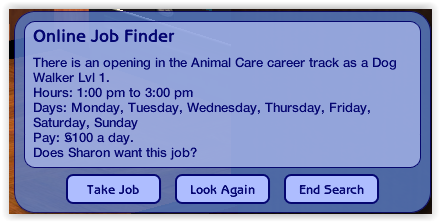
Circus (https://sims.fandom.com/wiki/Circus)
SimFileShare or MediaFire Level 1: Popcorn Vendor Level 2: Ticket Taker Level 3: Midway Carnier Level 4: Sideshow Barker Level 5: Clown Level 6: Human Cannonball Level 7: Acrobat Level 8: Trapeze Artist Level 9: Lion Tamer Level 10: Ringmaster

Fashion (https://sims.fandom.com/wiki/Fashion)
SimFileShare or MediaFire Level 1: Department Store Clerk Level 2: Tailor Level 3: Makeup Artist Level 4: Painter's Model Level 5: Fashion Photographer Level 6: Tradeshow Model Level 7: Runway Model Level 8: Supermodel Level 9: Fashion Columnist Level 10: Fashion Designer
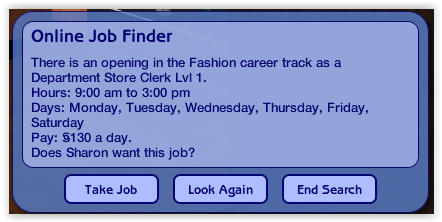
Hacker (https://sims.fandom.com/wiki/Hacker)
SimFileShare or MediaFire Level 1: Beta Tester Level 2: Support Tech Level 3: Web Master Level 4: Hacker Level 5: Security Consultant Level 6: Software Designer Level 7: Internet Entrepreneur Level 8: Software CEO Level 9: Venture Capitalist Level 10: Information Overlord

Xtreme (https://sims.fandom.com/wiki/Xtreme)
SimFileShare or MediaFire Level 1: Daredevil Level 2: Bungee Jumper Instructor Level 3: Whitewater Rafting Guide Level 4: Extreme Circuit Recruit Level 5: Bush Pilot Level 6: Mountain Climber Level 7: Photo Journalist Level 8: Treasure Hunter Level 9: Grand Prix Driver Level 10: World Surfing Champion

There are four files per career (eg. AdultCareer_AnimalCare, AdultCareer_AnimalCare_Conditions, AdultCareer_AnimalCare_LTW and TeenElderCareer_AnimalCare).
All four files are required and can just be put straight into your downloads folder.
You will notice some of the above career levels do not match the original careers. Some of the levels are already represented in other careers in the game, so I decided to swap some around and include some new jobs.
These files have new GUID numbers, so they should not conflict with other downloads, even the original versions of these careers.
The Lifetime Wants are also compatible with @lamare-sims 50 New Lifetime Wants for Sims 2: https://modthesims.info/download.php?t=669675
I'd like to thank the following members of our community for their assistance in these updates:
@sims2idea-lientebollemeis2i for creating the converted careers to begin with and providing their permission to share my amendments. Their original careers can be found here: https://s2idownloads.blogspot.com/search/label/SFS%20-%201t2%20Maxis%27%20Careers
@lamare-sims for creating the 50 New Lifetime Wants for Sims 2 mod and providing me assistance in making the Lifetime Wants compatible with their mod.
@sharlasims for her assistance and support with creating the chance cards.
@teaaddictyt For her Photoshop skills and support with converting the career icons.
@episims for their assistance troubleshooting the career outfits.
@rio-sims & @palominocorn for creating a tutorial on how to create Lifetime Wants.
I hope you enjoy my version of these careers and please do not hesitate to contact me if you run into any trouble. 06/07/2023 - EDIT: Thank you to @lamare-sims who found some errors in the files. I have fixed the LTW and Conditions files to reflect some correct instance numbers and I have reuploaded the zip files to include up the amended files. Please replace these two files for each career if you have already downloaded it. 05/08/2023 - UPDATE: @bothersomecryptid has touched up the icons and been kind enough to share them! They made them with to work better with the Clean UI. You just need to replace the images in the career file through SimPE. You can download at this link: https://drive.google.com/file/d/1q5j3AniepLh_lE_kgWgOYOkZkq9EzHNJ/view 03/09/2023 - EDIT: Thank you to @equinoxts2 and @lamare-sims for their further edits to the conditions files. I have reuploaded all files as new links, so feel free to replace the ones in your game. Children should no longer roll LTW's and you shouldn't get any errors when choosing these LTW's. 06/09/2023 - @venomander has been kind enough to create alternative icons for the careers. You can download them at these links: MediaFile 1
MediaFile 2
626 notes
·
View notes
Text

People's Computer Company March-April 1977
Among the other topics listed on its front page, this issue included the article "Why I Hate My Computer When It Speaks In BASIC." The "Free Software?" article was subtitled "or, Support Your Local Software Vendor."
24 notes
·
View notes
Text
So this is what the Biden administration spent it's last week in office doing. It's important to know this isn't unusual activity for them. But this is all just in one week:
"Out With a Bang: Enforcers Go After John Deere, Private Equity Billionaires
https://www.thebignewsletter.com/p/out-with-a-bang-enforcers-go-after
At least for a few more days, laws are not suggestions. In the end days of strong enforcement, a flurry of litigation is met with a direct lawsuit by billionaires against Biden's Antitrust chief.
Matt Stoller
Jan 16, 2025
It’s less than a week until this era of antitrust ends. And while much of the news has been focused elsewhere, enforcers have engaged in a flurry of action, which will by legal necessity continue into the next administration. One case in particular angered some of the most powerful people on Wall Street, the partners of a $600 billion private equity firm called Kohlberg Kravis Roberts (KKR).
But before getting to that suit, here’s a partial list of some of the actions enforcers have taken in the last two weeks.
The Federal Trade Commission
Filed a monopolization claim against agricultural machine maker John Deere for generating $6 billion by prohibiting farmers from being able to repair their own equipment, a suit which Wired magazine calls a “tipping point” for the right to repair movement.
Released another report on pharmacy benefit managers, including that of UnitedHealth Group, showing that these companies inflated prices for specialty pharmaceuticals by more than $7 billion.
Sued Greystar, a large corporate landlord, for deceiving renters with falsely advertised low rents and not including mandatory junk fees in the price.
Issued a policy statement that gig workers can’t be prosecuted for antitrust violations when they try to organize, and along with the Antitrust Division, updated guidance on labor and antitrust.
Put out a series of orders prohibiting data brokers from selling sensitive location information.
Finalized changes to a rule barring third party targeted advertising to children without an explicit opt-in.
The Consumer Financial Protection Bureau
Went to court against Capital One for cheating consumers out of $2 billion by deceiving them on savings accounts and interest rates.
Fined cash app purveyor Block $175 million for fostering fraud on its platform and then refusing to offer customer support to affected consumers.
Proposed a rule to prohibit take-it-or-leave-it contracts from financial institutions that allow firms to de-bank users over how they express themselves or whether they seek redress for fraud.
Issued a report with recommendations on how states can update their laws to protect against junk fees and privacy abuses.
Sued credit reporting agency Experian for refusing to investigate consumer disputes and errors on credit reports.
Finalized a rule to remove medical debt from credit scores.
The Antitrust Division
Sued to block a merger of two leading business travel firms, American Express Global Business Travel Group and CWT Holdings.
Filed a complaint against seven giant corporate landlords for rent-fixing, using the software and consulting firm RealPage.
Got four guilty pleas in a bid-rigging conspiracy by IT vendors against the U.S. government, a guilty plea from an asphalt vendor company President, and convicted five defendants in a price-fixing scam on roofing contracts.
Issued a policy statement that non-disclosure agreements that deter individuals from reporting antitrust crimes are void, and that employers “using NDAs to obstruct or impede an investigation may also constitute separate federal criminal violations.”
Filed two amicus briefs with the FTC, one supporting Epic Games in its remedy against Google over app store monopolization, and the other supporting Elon Musk in his antitrust claims against OpenAI, Microsoft, and Reid Hoffman.
And honorary mention goes to the Department of Transportation for suing Southwest and fining Frontier for ‘chronically delayed flights.’"
It's worth reading the entire piece because the Biden people have also gone after KKR which is one of the biggest and most well-connected private equity firms. Remember when suddenly last year all the rich people who used to donate to both parties stopped giving money to Democrats? The billionaires coup against Biden was because of anti trust enforcement.
IF YOU'RE THINKING "GOSH I NEVER HEARD ABOUT ANY OF THIS BEFORE" I HOPE YOU CAN PUT TOGETHER THAT THE NEWS AND SOCIAL MEDIA PLATFORMS ARE ALL OWNED BY BILLIONAIRES WHO ARE VERY ANGRY ABOUT ALL OF THIS AND MAYBE THAT'S WHY YOU NEVER SAW ANYONE TALK ABOUT THE HUGE RESURGENCE OF ANTI TRUST WORK DONE BY BIDEN FOR THE LAST FOUR YEARS.
And no, Trump cannot magically make this all go away. The lawsuits will have to be played out and many of them have state level components that mean the feds can't just shut them down.
X
11 notes
·
View notes
Text
Configuring Zephyr: A Deep Dive into Kconfig
We presented The Zephyr Project RTOS and illustrated a personal best practice for beginning with "Zephyr" in an earlier blog post. A custom West manifest file is a great way to guarantee that your code is always at a known baseline when you begin development, as you saw in that blog post. Following the creation of your custom manifest file and the establishment of your baseline repositories using West, what comes next in your Zephyr journey?

Enabling particular peripherals, features, and subsystems is one of the first steps in putting embedded software into practice. Some MCU manufacturers, like STM32, Microchip, and TI, have tools in their IDEs that let developers add subsystems to their codebase and enable peripherals in their projects. These tools, however, are closely related to the MCUs that the vendors sell. Applying these tools' functionality to other MCUs is challenging, if not impossible.
However, we can enable a specific MCU subsystem or feature using a vendor-neutral mechanism provided by The Zephyr Project RTOS. For people like me who don't like GUIs, this mechanism can be used with a command line. The name of this utility is "Kconfig." I'll go over what Kconfig is, how it functions, and the various ways we can use it to incorporate particular features and subsystems into our Zephyr-based project in this blog post.
WHAT IS KCONFIG?
Kconfig is still utilized today as a component of the kernel compilation process, having been initially created as part of the Linux kernel. Kconfig has a particular grammar. Although fascinating, the specifics of how Kconfig is implemented in the Linux kernel are outside the purview of this blog post. Alternatively, if you're interested, you can read my article here: (https://www.linux-magazine.com/Issues/2021/244/Kconfig-Deep-Dive), which walks through the Kconfig source code. However, after seeing an example, it's simple to become familiar with the format of a "Kconfig"—the slang term for a specific configuration option. The Kconfig system consists of three primary components.
First, there is the collection of Kconfig files scattered across different OS codebase directories. For example, if we look under "drivers/led" within the Zephyr codebase, we see a file named Kconfig with the following contents: menuconfig LED bool "Light-Emitting Diode (LED) drivers" help Include LED drivers in the system configurationif LED...config LED_SHELL bool "LED shell" depends on SHELL help Enable LED shell for testing.source "drivers/led/Kconfig.gpio"...endif # LED
Using the if statement, the line that begins with "menuconfig" tells the Kconfig system that "LED" contains a number of feature options that are only visible if the "LED" feature is enabled. The user can then activate the "LED_SHELL" option if the "LED" feature is enabled. The result of this configuration option is a Boolean, which determines whether this feature is enabled or disabled, as the line that follows shows. If a configuration option refers to a particular configuration parameter, the result can also be an integer in addition to a Boolean. The line that starts with "depends" indicates that in order for the "LED_SHELL" feature to be visible, the "SHELL" feature needs to be enabled. As a result, only after the "LED" and "SHELL" features have been enabled will the "LED_SHELL" feature become visible. A more detailed explanation of the feature can be found in the two lines that begin with "help". Last but not least, the final line before the "endif" lets us refer to additional Kconfig files, which aids in classifying components. As though they were copied and pasted, the features of the referenced file are present in the current file. It is crucial to remember that the path to "source" comes from the Zephyr codebase's root.
HOW SHOULD YOU USE KCONFIG?
A collection of applications that enable users to enable or disable the features listed in all Kconfig files make up the second component of the Kconfig infrastructure. Zephyr provides a Visual Studio Code extension that enables users to carry out this task with a graphical user interface. For command line enthusiasts like myself, the VS Code extension provides an alternative to utilizing a graphical user interface. In order to configure Zephyr appropriately, the extension can accept a file, which is the final component of the Kconfig infrastructure and contains a set of configuration options that can be turned on or off. The following snippet shows an example. CONFIG_BT=yCONFIG_BT_PERIPHERAL=yCONFIG_BT_GATT_CLIENT=yCONFIG_BT_MAX_CONN=1CONFIG_BT_L2CAP_TX_MTU=250CONFIG_BT_BUF_ACL_RX_SIZE=254
There is nothing complicated about the file format. "CONFIG_" appears at the start of each line, and then the configuration option's name. After the "=" symbol, the line either ends with a "y" to activate the feature or a "n" to deactivate it. In the example above, we configure the stack parameters and activate the Bluetooth stack in Zephyr along with specific stack features. "prj. conf," which contains user-defined features, is the default file in the majority of Zephyr-based applications.
CONCLUSION
The Zephyr Project RTOS provides a robust, vendor-neutral mechanism called the Kconfig infrastructure that allows us to fully configure our entire application. It can be used to control particular subsystems and peripherals within the MCU in addition to turning on or off individual stacks within the RTOS and setting configuration parameters.
Ready to bring your embedded systems to life with optimized configurations and robust solutions? We specialize in hardware design and software development tailored to your project needs. Whether you're configuring peripherals or diving deeper into Kconfig for your Zephyr-based applications, our experts are here to support you every step of the way.
👉 Contact Us Today and let's transform your embedded ideas into reality!
2 notes
·
View notes
Text
I use Arch, BTW
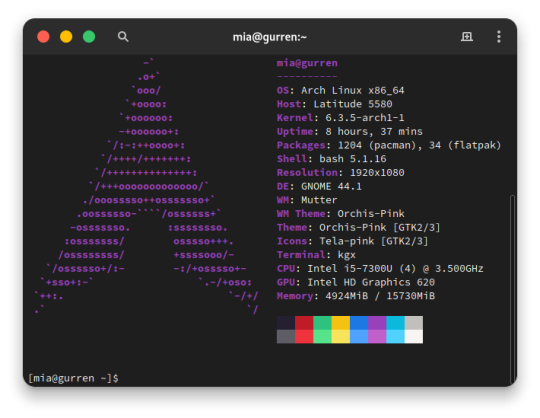
I made the switch from Ubuntu 23.04 to Arch Linux. I embraced the meme. After over a decade since my last failed attempt at daily driving Arch, I'm gonna put this as bluntly as I can possibly make it:
Arch is a solid Linux distribution, but some assembly is required.
But why?
Hear me out here Debian and Fedora family enjoyers. I have long had the Debian family as my go-to distros and also swallowed the RHEL pill and switched my server over to Rocky Linux from Ubuntu LTS. on another machine. More on that in a later post when I'm more acclimated with that. But for my personal primary laptop, a Dell Latitude 5580, after being continually frustrated with Canonical's decision to move commonly used applications, particularly the web browsers, exclusively to Snap packages and the additional overhead and just weird issues that came with those being containerized instead of just running on the bare metal was ultimately my reason for switching. Now I understand the reason for this move from deb repo to Snap, but the way Snap implements these kinds of things just leaves a sour taste in my mouth, especially compared to its alternative from the Fedora family, Flatpak. So for what I needed and wanted, something up to date and with good support and documentation that I didn't have to deal with 1 particular vendors bullshit, I really only had 2 options: Arch and Gentoo (Fedora is currently dealing with some H264 licensing issues and quite honestly I didn't want to bother with that for 2 machines).

Arch and Gentoo are very much the same but different. And ultimately Arch won over the 4chan /g/ shitpost that has become Gentoo Linux. So why Arch? Quite honestly, time. Arch has massive repositories of both Arch team maintained and community software, the majority of what I need already packaged in binary form. Gentoo is much the same way, minus the precompiled binary aspect as the Portage package manager downloads source code packages and compiles things on the fly specifically for your hardware. While yes this can make things perform better than precompiled binaries, the reality is the difference is negligible at best and placebo at worst depending on your compiler settings. I can take a weekend to install everything and do the fine tuning but if half or more of that time is just waiting for packages to compile, no thanks. That plus the massive resource that is the Arch User Repository (AUR), Arch was a no-brainer, and Vanilla arch was probably the best way to go. It's a Lego set vs 3D printer files and a list of hardware to order from McMaster-Carr to screw it together, metaphorically speaking.
So what's the Arch experience like then?
As I said in the intro, some assembly is required. To start, the installer image you typically download is incredibly barebones. All you get is a simple bash shell as the root user in the live USB/CD environment. From there we need to do 2 things, 1) get the thing online, the nmcli command came in help here as this is on a laptop and I primarily use it wirelessly, and 2) run the archinstall script. At the time I downloaded my Arch installer, archinstall was broken on the base image but you can update it with a quick pacman -S archinstall once you have it online. Arch install does pretty much all the heavy lifting for you, all the primary options you can choose: Desktop environment/window manager, boot loader, audio system, language options, the whole works. I chose Gnome, GRUB bootloader, Pipewire audio system, and EN-US for just about everything. Even then, it's a minimal installation once you do have.


Post-install experience is straightforward, albeit just repetitive. Right off the archinstall script what you get is relatively barebones, a lot more barebones than I was used to with Ubuntu and Debian Linux. I seemingly constantly was missing one thing for another, checking the wiki, checking the AUR, asking friends who had been using arch for even longer than I ever have how to address dumb issues. Going back to the Lego set analogy, archinstall is just the first bag of a larger set. It is the foundation for which you can make it your own further. Everything after that point is the second and onward parts bags, all of the additional media codecs, supporting applications, visual tweaks like a boot animation instead of text mode verbose boot, and things that most distributions such as Ubuntu or Fedora have off the rip, you have to add on yourself. This isn't entirely a bad thing though, as at the end if you're left with what you need and at most very little of what you don't. Keep going through the motions, one application at a time, pulling from the standard pacman repos, AUR, and Flatpak, and eventually you'll have a full fledged desktop with all your usual odds and ends.

And at the end of all of that, what you're left with is any other Linux distro. I admit previously I wrote Arch off as super unstable and only for the diehard masochists after my last attempt at running Arch when I was a teenager went sideways, but daily driving it on my personal Dell Latitude for the last few months has legitimately been far better than any recent experiences I've had with Ubuntu now. I get it. I get why people use this, why people daily drive this on their work or gaming machines, why people swear off other distros in favor of Arch as their go to Linux distribution. It is only what you want it to be. That said, I will not be switching to Arch any time soon on mission critical systems or devices that will have a high run time with very specific purposes in mind, things like servers or my Raspberry Pi's will get some flavor of RHEL or Debian stable still, and since Arch is one of the most bleeding edge distros, I know my chance of breakage is non zero. But so far the seas have been smooth sailing, and I hope to daily this for many more months to come.
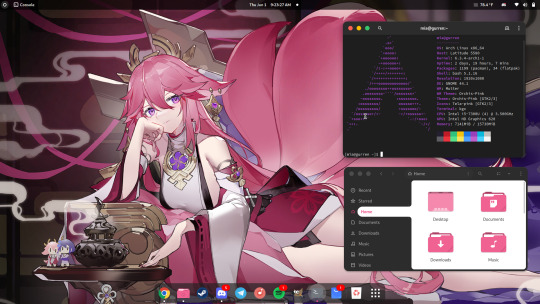
36 notes
·
View notes
Text
Fostering Partnerships of Amazon:
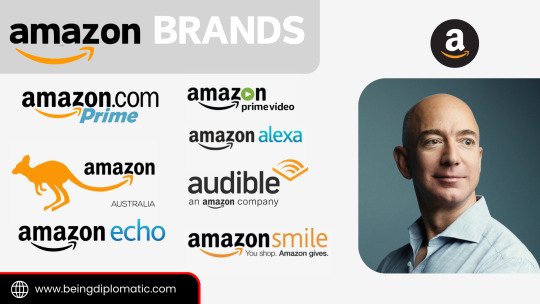
Third-Party Sellers: Amazon sells the goods and provides a list of independent vendors in the marketplace. Building a Collaboration in Which Amazon Offers. Platform operations and consumer outreach, while vendors supply goods and frequently take care of fulfillment.
Affiliate Program: Through its affiliate program, which pays bloggers and website owners commissions for promoting Amazon products, the company offers incentives to both people and companies to increase traffic to its platform.
AWS Partner Network (APN): We have a network of technology and consulting partners who provide free service solutions and highly skilled service delivery methods for our cloud service, Amazon Web Services.
Amazon Delivery Service Partners (DSP): Amazon Partners With Independence Contractors Through Its DSP Program To Deliver Packages Expanding Its Logistics Network And Capacity.
Amazon Associates Program: Publishers, influencers, and content producers like using Amazon’s Associate Program to promote Amazon products and earn referral credits.
Retail Partnerships: Amazon offers retailers and brands the opportunity to sell directly on its site through programs such as Vendor Central Seller Central.
Amazon Prime Partnerships: To enhance the value proposition for members, Amazon works with content providers, including publishers and film studios, to deliver content through its Prime membership program.
Technology Partnerships: To give customers more alternatives and capabilities, Amazon partners with tech firms to integrate their solutions with Amazon’s services.
AWS Marketplace: To promote collaborations with software developers and suppliers, AWS provides a marketplace where users may find, purchase, and utilize software and services that are hosted on AWS.
Acquisitions and Investments: To increase its capabilities or penetrate new markets, Amazon makes strategic investments in companies or acquires them outright. This might be considered a partnership or collaboration. Read more...
2 notes
·
View notes
Text
We have a new IT vendor at work, who are experienced in "compliance," and I keep having problems. First they deleted all the homemade executables off my computer, basically all the software I need to interface with my experiment. They gave it back, but getting them to set up a white list, rather than having them block the programs and call me on the phone every time I tried to run them, took a few tries. (Then two weeks later they did it to someone else and really freaked him out, because they label everything unknown as a "trojan".)
Today, though. Notepad wouldn't open. I opened a ticket. A technician said he'd get back to me. Their head of cybersecurity then wrote to me to say that it wasn't the antivirus causing the problem, it was some other program. Then he closed the ticket.
Does notepad open now? No, but the ticket is closed.
10 notes
·
View notes
Text
Decoding CISA Exploited Vulnerabilities

Integrating CISA Tools for Effective Vulnerability Management: Vulnerability management teams struggle to detect and update software with known vulnerabilities with over 20,000 CVEs reported annually. These teams must patch software across their firm to reduce risk and prevent a cybersecurity compromise, which is unachievable. Since it’s hard to patch all systems, most teams focus on fixing vulnerabilities that score high in the CVSS, a standardized and repeatable scoring methodology that rates reported vulnerabilities from most to least serious.
However, how do these organizations know to prioritize software with the highest CVE scores? It’s wonderful to talk to executives about the number or percentage of critical severity CVEs fixed, but does that teach us anything about their organization’s resilience? Does decreasing critical CVEs greatly reduce breach risk? In principle, the organization is lowering breach risk, but in fact, it’s hard to know.
To increase cybersecurity resilience, CISA identified exploited vulnerabilities
The Cybersecurity and Infrastructure Security Agency (CISA) Known Exploited Vulnerabilities (KEV) initiative was created to reduce breaches rather than theoretical risk. CISA strongly urges businesses to constantly evaluate and prioritize remediation of the Known Exploited Vulnerabilities catalog. By updating its list, CISA hopes to give a “authoritative source of vulnerabilities that have been exploited in the wild” and help firms mitigate risks to stay ahead of cyberattacks.
CISA has narrowed the list of CVEs security teams should remediate from tens-of-thousands to just over 1,000 by focusing on vulnerabilities that:
Been assigned a CVE ID and actively exploited in the wild
Have a clear fix, like a vendor update.
This limitation in scope allows overworked vulnerability management teams to extensively investigate software in their environment that has been reported to contain actively exploitable vulnerabilities, which are the most likely breach origins.
Rethinking vulnerability management to prioritize risk
With CISA KEV’s narrower list of vulnerabilities driving their workflows, security teams are spending less time patching software (a laborious and low-value task) and more time understanding their organization’s resiliency against these proven attack vectors. Many vulnerability management teams have replaced patching with testing to see if:
Software in their surroundings can exploit CISA KEV vulnerabilities.
Their compensatory controls identify and prevent breaches. This helps teams analyze the genuine risk to their organization and the value of their security protection investments.
This shift toward testing CISA KEV catalog vulnerabilities shows that organizations are maturing from traditional vulnerability management programs to Gartner-defined Continuous Threat Exposure Management (CTEM) programs that “surface and actively prioritize whatever most threatens your business.” This focus on proven risk instead of theoretical risk helps teams learn new skills and solutions to execute exploits across their enterprise.
ASM’s role in continuous vulnerability intelligence
An attack surface management (ASM) solution helps you understand cyber risk with continuous asset discovery and risk prioritization.
Continuous testing, a CTEM pillar, requires programs to “validate how attacks might work and how systems might react” to ensure security resources are focused on the most pressing risks. According to Gartner, “organizations that prioritize based on a continuous threat exposure management program will be three times less likely to suffer a breach.”
CTEM solutions strengthen cybersecurity defenses above typical vulnerability management programs by focusing on the most likely breaches. Stopping breaches is important since their average cost is rising. IBM’s Cost of a Data Breach research shows a 15% increase to USD 4.45 million over three years. As competent resources become scarcer and security budgets tighten, consider giving your teams a narrower emphasis, such as CISA KEV vulnerabilities, and equipping them with tools to test exploitability and assess cybersecurity defense robustness.
Checking exploitable vulnerabilities using IBM Security Randori
IBM Security Randori, an attack surface management solution, finds your external vulnerabilities from an adversarial perspective. It continuously validates an organization’s external attack surface and reports exploitable flaws.
A sophisticated ransomware attack hit Armellini Logistics in December 2019. After the attack, the company recovered fast and decided to be more proactive in prevention. Armellini uses Randori Recon to monitor external risk and update asset and vulnerability management systems as new cloud and SaaS applications launch. Armellini is increasingly leveraging Randori Recon’s target temptation analysis to prioritize vulnerabilities to repair. This understanding has helped the Armellini team lower company risk without affecting business operations.
In addition to managing vulnerabilities, the vulnerability validation feature checks the exploitability of CVEs like CVE-2023-7992, a zero-day vulnerability in Zyxel NAS systems found and reported by IBM X-Force Applied Research. This verification reduces noise and lets clients act on genuine threats and retest to see if mitigation or remediation worked.
Read more on Govindhtech.com
4 notes
·
View notes
Text
EazyLeadz Review - $127 to $1500+ Eazy Pay Days WITHOUT Ads, A Huge Audience

EazyLeadz Review - $127 to $1500+ Eazy Pay Days WITHOUT Ads, A Huge Audience
Works Amazing For Beginners - It’s Your Easiest, Surest & Cheapest Way To Passive Online Income & Daily ChaChing Alerts In 2024!
EazyLeadz Review - Introduction
Welcome to my review of EasyLeadz, arecently launched system that touts itself as a "Lazy man" solution for simplified lead generation and monetization. This tool claims to empower individuals, even those with little experience, to access and profit from substantial buyer leads without the reliance on advertisements, with the ultimate goal of effortlessly boosting their businesses.
In the quest for targeted buyers to promote affiliate products, traditional lead gathering methods are often viewed as time-consuming and challenging, potentially putting a cap on a company's earnings. EasyLeadz positions itself as a solution to this challenge in the business landscape, offering a user-friendly lead generation platform that streamlines the process, enabling users to effortlessly generate targeted traffic for their products.
EasyLeadz goes beyond merely promising increased visibility. It asserts the potential for substantial profits by effectively promoting personal or company products. In a business environment where lead generation is a critical factor for success, EasyLeadz aims to be a convenient and effective solution, presenting a fresh and simplified approach to tapping into and capitalizing on potential customer engagement.
Eazy Leadz Review - Overview
Product Name : EazyLeadz
Vendor : Ekeocha Roland
Front End Price : $17
Product Type : Software
Support : Effective Support
Official Website : Get Access now
Recommended : Highly Recommended
Skill Level Needed : ZERO Skill Levels
Rating : 9.4 out of 10
Ready To Unlock Your Way To Steady Passive Income
& Daily ChaChing Alerts?
RIDICULOUSLY LOW ONE TIME INVESTMENT!
No Monthly Fee Required | Agency/Commercial Rights Included For FREE
Use The Coupon “EAZYLEADZ3” for $3 OFF!
$47/Month $17 OneTime Payment Only If You Act Now!
YES, I’M READY! GIVE MEACCESS NOW!
Eazy Leadz Review – Features
® Unlock 100+ DONE FOR YOU Interactive Lead Capture Forms & Popup Funnels ready to deploy in 60 seconds flat.
® Unique lead form and popup funnel strategy helps users to leverage multi-source traffic(landing pages, websites, social media, etc.) and convert them into engaged leads
® Fast & Easy To Set Up - Deploy In Under 60 Seconds Flat, no skill is required, no prior experience, not even AI prompting.
® 100% Done for you system - Lead magnet, copy, tech, delivery - we’ve LITERALLY done all the work.
® Comes with a monetization kit - we help you build your list and then show you how to make money from it - 100% beginner friendly.
® Users Can Start Getting Results Immediately.
EazyLeadz Review – Benefits
Free List Building:
EazyLeadz streamlines the process of building your list with a 100% Done For You System, ensuring accessibility even for those with minimal experience in digital marketing.
Monetization:
Effortlessly collect payments with 1-Click e-Store Integration, enabling the rapid monetization of your email lists.
Quick Affiliate Review Pages:
Craft affiliate review video pages within minutes, simplifying the promotion of affiliate products and commission earning.
Advanced Funnel Logic:
Leverage advanced logic branching for funnel steps, creating dynamic and personalized experiences for your audience.
Legal Utilization of Video Authority:
Legally harness the influence and authority of top video marketers, enhancing the credibility of your content.
Diverse Video Sources:
Utilize videos from multiple sources, including YouTube and Vimeo, providing flexibility and expanding content options.
Create Captivating Video Funnels:
Easily transform any video into attractive funnels, turning website visitors into active subscribers and customers.
Simple Builder:
Use the easy drag-and-drop tool to create and customize your video funnels effortlessly.
Media Library Access:
Get free access to millions of stock videos, GIFs, and images to make your video funnels visually appealing.
Funnel Analytics:
See how well your funnels are performing with helpful analytics, so you can make smart decisions to improve them.
Mobile-Friendly Pages:
Make sure your video funnels and pages look great and work smoothly on all devices, from phones to computers.
Customization Options:
Personalize your video pages to match your brand, keeping a professional and consistent online presence.
Urgency and FOMO Features:
Add timers for urgency to create a sense of missing out, encouraging more engagement and conversions.
List Management Made Easy:
Effortlessly organize and use your contact information with a simple one-click export to CSV.
Simple Sharing with Hosted Links:
Share your video funnels easily with a wider audience using free hosted links, expanding your reach.
Dashboard for Key Metrics:
Keep an eye on important performance indicators through a clear dashboard, helping you make data-driven decisions to improve your video pages.
In conclusion, EazyLeadz provides a user-friendly solution that combines simplicity, customization, and powerful features to boost your digital marketing efforts.
Get Bonus and Coupon Code >>Click here
EazyLeadz Review– How it works?
Your Subscribers Can Start Getting Results in 3 Simple Steps
Step 1 : Choose a topic you're interested in and pick from more than 100 pre-made plans.
Step 2 : Share your plan to get a simple code that you can put on your pages, websites, or share through our social traffic tool.
Step 3 : Begin attracting and turning traffic from different places into interested leads and sales.
EazyLeadz Review – What BONUS in Ezyleadz?
How About Some Juicy FREE Bonuses Worth $9,375 ONLY For The First 99 Action Takers
(The Ball Is Now On Your Court…)
BONUS #1
How to Add Hundreds of Subscribers Weekly
Achieving success in an online business largely depends on having an opt-in email list with quality subscribers who engage with valuable content, make purchases, or respond to affiliate offers.
However, for many marketers, the challenge lies in driving subscribers to their lists, which can be a daunting task. If you're grappling with the same issue, it's time to take a moment to relax. Here's a valuable package that provides tips on adding hundreds of subscribers to your list every week.
BONUS #2
Free Access to My Email Writa Software
As a marketer online for over 10 years, I've written millions of emails. Let me tell you, writing emails isn't easy, even for short ones.
I want to offer you free access to my email writing software. This tool will make sure your emails grab attention and always get opened.
EazyLeadz Review – OTOS
Font End – $17
® Create up to 20 lead capture campaigns effortlessly.
® Explore a collection of 100+ ready-made lead form templates.
® Receive 100 Done-for-You premium lead magnets.
® Build a substantial list of up to 10,000 engaged email subscribers.
® Enjoy a swift and straightforward setup in under 60 seconds.
® Access a variety of 50+ Done-for-You theme designs.
® Incorporate urgency and FOMO with customizable timers.
® Embed campaigns seamlessly on unlimited pages, websites, or funnels.
® Employ Hello Bar, Sticky Button, and Pop-Up features for optimal engagement.
® Implement Exit Intent Technology and customize settings.
® Tap into a vast network of 5 billion social media traffic sources.
® Track key metrics through a robust analytics dashboard.
® Ensure GDPR compliance with a secure lead generation system.
® Integrate seamlessly with preferred autoresponder service providers.
® Manage local lists and export data to CSV.
® Benefit from multilingual support, covering 108 languages.
OTO 2 – $37/$47
® Construct and tailor extended lead capture pop funnels effortlessly.
® Utilize drag-and-drop simplicity to craft 20 interactive popup funnels.
® Implement lead segmentation to enhance engagement and generate 10 times more leads.
® Deliver multiple magnets efficiently through an extended funnel structure.
® Incorporate gamification strategies for heightened lead generation results.
® Easily set up complex lead funnel branches.
® Access a vast library of millions of stock videos, GIFs, and stock images.
® Deploy advanced logic branching for intricate funnel steps.
OTO 3 – $67/$97
® Unlock limitless campaigns, engaged leads, views, and traffic.
® Opt for a custom domain to elevate your branding.
® Leverage the teams feature for collaborative campaign efforts.
OTO 4
Become a member of the exclusive club for the latest and updated lead generation funnel assets.
Immediately acquire 50 additional Done-for-You (DFY) lead forms and magnets.
Unlock a monthly release of 5 new DFY lead forms.
Enjoy the exclusive option to request specific niches and magnets.
OTO 5
Access a ready-to-use affiliate marketing campaign package.
Follow a step-by-step implementation guide for seamless execution.
Benefit from pre-prepared bonuses, email sequences, and demo walkthrough.
Acquire everything necessary to unlock daily affiliate commissions.
OTO 6 – $97/$147
Achieve success as a software marketer by reselling EazyLeadz.
Offer 100 licenses at $97/$127.
Provide 1000 licenses at $127/$147.
Get Access Now >> Click here
EazyLeadz Review – FAQ
Q: Is EazyLeadz suitable for beginners?
Absolutely! EazyLeadz is specifically designed with beginners in mind, featuring a straightforward setup process and a user-friendly interface that requires no prior experience.
Q: Can I personalize the lead capture forms and popup funnels?
While EazyLeadz provides a variety of ready-made templates, customization options are somewhat limited. However, users can still modify certain elements to align with their branding and preferences.
Q: How quickly can I start seeing results with EazyLeadz?
Users can witness results almost immediately after deploying their campaigns. EazyLeadz is optimized for rapid engagement and conversion, allowing users to capitalize on their efforts swiftly.
Q: Is EazyLeadz suitable for advanced marketers?
While EazyLeadz primarily caters to beginners, advanced marketers can still benefit from its streamlined approach to lead generation. However, they may find themselves desiring more customization options and features tailored to their specific needs.
Q: What support options are available for EazyLeadz users?
EazyLeadz offers comprehensive support to its users, including tutorials, documentation, and direct assistance from the support team. Users can also access community forums for additional guidance and insights.
Q: Can I integrate EazyLeadz with other marketing tools and platforms?
EazyLeadz is designed for seamless integration with various marketing tools and platforms, enabling users to leverage their existing infrastructure while maximizing their lead generation efforts.
EazyLeadz Review – Conclusion
However, users should be cautious about the learning curve, relying too much on internet connectivity, and the potential costs associated with upgrades and reseller accounts. Consider your specific needs and give it a try for a while to see if EazyLeadz is the right fit for you.
Like with any tool, staying informed about updates, actively participating in the community, and making use of available resources will contribute to a more successful experience with EazyLeadz.
Thank you for taking the time to read this detailed review of EazyLeadz. I hope this thorough examination has given you useful insights to help you make a well-informed decision for your online journey.
Get Access Now >> Click here
#digitalmarketing#affiliate marketing#social media#list building#EazyLeadz Review#earn money online#earn money fast#earn from home#freelance#artificial intelligence#make money online#technology#success
2 notes
·
View notes
Text
Streamlining HR Processes: The Tale of How TalentKompass Deutschland Unleashed the Power of Outsourcing
Introduction: The ‘Aha!’ Moment
Picture this: you're navigating a labyrinth of tasks—hiring, payroll, compliance, and whatnot, all while trying to keep your business running smoothly. If you're TalentKompass Deutschland, you take a moment to pause and think, "There has to be a better way." And so began their enlightening journey into the world of Human Capital Management (HCM) outsourcing—a step that wasn’t just smart, it was transformative.
The Winding Road: Those Pesky HR Challenges
Imagine juggling flaming torches while walking a tightrope—that's what handling HR at a growing company feels like. TalentKompass Deutschland knew that to succeed, something had to give. They had a sprawling list of HR tasks, each more intricate than the last, and as the team grew, so did the chaos.
The Lightbulb Moment: Hello, HCM Outsourcing!
So, they took the plunge and said, "Let's bring in the pros." And just like that, they handed over their HR tasks to HCM outsourcing specialists. Why? Because these folks have made it their life’s mission to conquer the HR chaos, armed with high-tech tools and years of wisdom.
The Juicy Benefits: What’s Not to Love?
Less Money Drama
Before outsourcing, just the thought of HR costs would make anyone’s wallet tremble in fear. But by outsourcing, TalentKompass Deutschland started saving big time—no more hefty salaries, no more pricey software, and sayonara, compliance risks!
Wisdom and Gizmos
We're talking about real HR wizards here, the kind who live and breathe payroll and benefits, and who know how to get things done right, the first time. Plus, the tech they bring into play? Absolutely top-notch.
Focus, Baby, Focus!
The most liberating part? The TalentKompass Deutschland team could finally stop sweating the small stuff and get back to doing what they love and do best—growing their business.
Keeping It Legal
No one wants to accidentally step over legal lines. Thankfully, the outsourcing crew came with their own team of legal eagles, making sure that TalentKompass Deutschland stayed on the right side of the law.
The Nitty-Gritty: Functions They Kissed Goodbye
Payroll: Numbers in Safe Hands
Payroll could be a brain-teaser. One wrong move and you could trigger a cascade of errors. Now, it's like clockwork, managed by their new expert partners.
The Right People: Hired!
You need great talent to build a great business. That's why TalentKompass Deutschland leaned on their HCM partner to find folks who fit not just the job description, but also the company vibe.
The Hellos and Goodbyes
The first and last impressions matter—a lot. TalentKompass Deutschland's outsourcing team made sure of that, greeting new hires with a warm welcome and bidding adieu to departing ones with grace.
Learning the Ropes
When it comes to training, one size never fits all. Custom-tailored training programs ensured that every team member felt valued and empowered.
The Cherry on Top: Benefits
Who wouldn’t want to work at a place that takes care of its employees? Benefits administration went from a puzzle to a piece of cake.
Picking the Dream Team: The Outsourcing Partner
Reputation, flexibility, data security—these were the non-negotiables. TalentKompass Deutschland wasn't just looking for a vendor; they wanted a true partner, and they found just that.
The Happy Ending: Transformation Achieved
So, what’s the takeaway? TalentKompass Deutschland’s move to HCM outsourcing wasn’t just a tactical shift; it was a full-blown game-changer. They became leaner, meaner, and ever-so-compliant, all while creating a more harmonious, efficient workplace.
FAQs for the Curious Minds
Is HCM outsourcing just for the big guys?
Nope, whether you're a startup or a multinational, there's an HCM solution that’s just right for you.
How does it actually save money?
Imagine slashing several lines from your expense sheet—that's HCM outsourcing for you.
Are there any pitfalls?
Sure, like with any big move, there are risks, such as data breaches or a potential culture clash. But pick the right partner, and you’re golden.
What about keeping our data safe?
Good question! Always, always check your partner’s security measures.
So, no more worrying about compliance?
Exactly, leave it to the experts and sleep easy.
And there you have it, folks! TalentKompass Deutschland found their North Star in HCM outsourcing and charted a course toward smoother waters. So, what's your compass telling you?
2 notes
·
View notes
Text
Holiday Print on Demand Inventory Management Best Practices
As the saying goes, the holiday season is the most wonderful time of the year – especially for eCommerce businesses. With total sales during the holiday online shopping season exceeding $204 billion, this is a fantastic opportunity for your online business to get a piece of the pie. The holiday season has a way of sneaking up on you, and it frequently causes problems with print on demand inventory management. If you are not prepared for the holiday sales surge, you may encounter dissatisfied customers and lose potential revenue. Fortunately, there are many things you can do right now to better prepare for the holidays.
8 BEST PRACTICES FOR MANAGING HOLIDAY PRINT ON DEMAND INVENTORY
1. Mark your calendar.
Create calendar reminders to keep the holidays from sneaking up on you unannounced. Keep your organization informed, particularly your marketing and eCommerce holiday ad teams, so that they are ready to run campaigns. Here are some important holiday dates to remember in 2022:
• Thanksgiving: November 24
• Black Friday: November 29
• Small Business Saturday: November 30
• Cyber Monday: December 2
• Christmas: December 25
• New Year’s Day: January 1
• Valentine’s Day: February 14
To avoid overstretching, consider implementing a cutoff date for orders delivered by a specific holiday based on the carriers’ holiday shipping deadlines.
2. Contact your suppliers ahead of time.
Because demand will skyrocket during the holiday season, it is critical to notify your suppliers and vendors ahead of time. Share information on expected order volume to ensure that you order enough to avoid stockouts. Like you, they also require time to deliver orders successfully.
3. Make your orders in advance.
Using historical inventory data, such as SKU performance, you should have a good idea of what your top sellers will be, which will allow you to make more accurate estimates before ordering more inventory. However, if you are a newcomer, simply conducting some online research, including social media, can assist you in determining which items in your store are in high demand this season. You can then list what you need to stock up on.
4. Determine stock levels.
Carefully planning inventory puts your company in a much better position to deal with increased demand during peak shopping seasons. Once you’ve determined what you’ll require for the holiday season, there are simple ways to ensure that your inventory never falls below that level. Tracking stock levels and automatically setting reorder notification points is a valuable tool if you work with a tech-enabled print on demand service provider or use inventory management software. It is recommended that you increase reorder points and reorder quantity during the holiday season to cover a spike in sales.
5. Conduct inventory audits.
During this busy season, you may want to conduct inventory audits more frequently to maintain inventory accuracy and ensure you always have enough stock at all times. Inventory audits can be performed in-house or by a third party, such as a print on demand company, and they can be as simple as performing more frequent spot checks.
6. Implement inventory control.
Keeping track of your inventory is critical whether you run a single-channel or omnichannel business – especially during the holidays. Fortunately, there is inventory management software from your print on demand provider that can do the majority of the work for you: keep your business running as usual while saving you from having to deal with inventory stockouts or over-ordering.
7. Purchase holiday packaging.
The holidays are a thrilling and joyous time of year. Your packaging should be as well. Look for something that will make your customers happy when they receive their package, and if your packaging is recyclable, that’s even better. It will improve your customer’s unboxing experience and encourage their friends to buy as well. However, make certain that it will not impact your profits.
8. Monitor your inventory closely during holidays.
On Black Friday, Cyber Monday, and Christmas, keep an eye on your inventory numbers because these are the busiest days for your retail business. Take notes on how your inventory flows and make adjustments and improvements for next year. You can also seek assistance from your print on demand service provider. They are subject matter experts, and you can benefit from their knowledge and experience.
WHEN IN DOUBT, LET THE PROS HELP OUT!
While plans may not be carried out exactly as planned, they eliminate inefficiencies and errors during peak sales periods. You may not be able to predict everything. Still, by implementing some of the holiday best practices outlined above, you will likely generate more revenue this holiday season. We admire and applaud your desire to accomplish as much as possible on your own. However, there will come a time when reaching out is the best thing you can do for your company. Fulfillplex, a top eCommerce fulfillment company, can help your company reach its full potential. After all, even Santa requires assistance. Reach out to the pros now.
#print on demand#print on demand service provider#print on demand company#print on demand provider#top eCommerce fulfillment company#eCommerce fulfillment#fulfillplex
2 notes
·
View notes